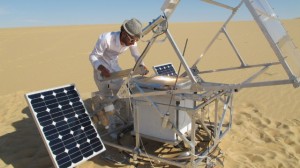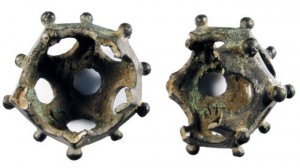“‘In the year 4000, you’ll go see this clock and you’ll wonder, “Why on Earth did they build this?”‘ — Amazon CEO Jeff Bezos

A friend of mine is the director of a foundation that was created to foster long term thinking. By long term, I mean thousands of years into the future. The foundation is called The Long Now Foundation and you can learn more about it here and here.
A recent article in Wired magazine , intro below, covers brilliantly one of the foundation’s key projects as well as profiles some of the forward-thinking minds behind the project – the design and creation of a clock that will keep time for 10,000 years. Think Egyptian pyramids: This is the scale and magnitude of the clock project (see a prototype here). The clock will be installed inside a mountain in West Texas…
How to Make a Clock Run for 10,000 Years
By Dylan Tweney (Wired)
High on a rocky ridge in the desert, nestled among 5,000-year-old bristlecone pines, is the topmost part of a clock that has been ticking for thousands of years.
It looks out over the ruins of a spaceport, built by a rich man whose name was forgotten long ago.
Most of the clock is deep inside the mountain, below the ridgeline. To get there, you hike for days through the heat; the only sounds are the buzzing of flies and the whisper of the occasional breeze. You climb up through the brush, then pass through a hidden door into the darkness and silence of the clock chamber. Far above your head, in the darkness, a massive pendulum swings slowly back and forth, making the clock tick once every 10 seconds.
No one knows who built it, or why. They built it well, and even now it keeps perfect time. All we know of these strange people is that they were obsessed with the future.Why else would they build something that had no purpose except to mark time for thousands of years?
The rich man is Amazon.com founder Jeff Bezos, and he has indeed started construction on a clock that he hopes will run for 10,000 years.
For Bezos, the founder of Amazon.com, the clock is not just the ultimate prestige timepiece. It’s a symbol of the power of long-term thinking. His hope is that building it will change the way humanity thinks about time, encouraging our distant descendants to take a longer view than we have.
For starters, Bezos himself is taking a far, far longer view than most Fortune 500 CEOs.
“Over the lifetime of this clock, the United States won’t exist,” Bezos tells me. “Whole civilizations will rise and fall. New systems of government will be invented. You can’t imagine the world — no one can — that we’re trying to get this clock to pass through.”
To help achieve his mission of fostering long-term thinking, Bezos last week launched a website to publicize his clock. People who want to visit the clock once it’s ready can put their names on a waiting list on the site — although they’ll have to be prepared to wait, as the clock won’t be complete for years.
It’s a monumental undertaking that Bezos and the crew of people designing and building the clock repeatedly compare to the Egyptian pyramids. And as with the pharaohs, it takes a certain amount of ego — even hubris — to consider building such a monument. But it’s also an unparalleled engineering problem, challenging its makers to think about how to keep a machine intact, operational and accurate over a time span longer than most human-made objects have even existed.
Consider this: 10,000 years ago, our ancestors had barely begun making the transition from hunting and gathering to simple agriculture, and had just figured out how to cultivate gourds to use as bottles. What if those people had built a machine, set it in motion, and it was still running today? Would we understand how to use it? What would it tell us about them?
And would it change the way we think about our own future?…
For the complete article, click here.
Share



